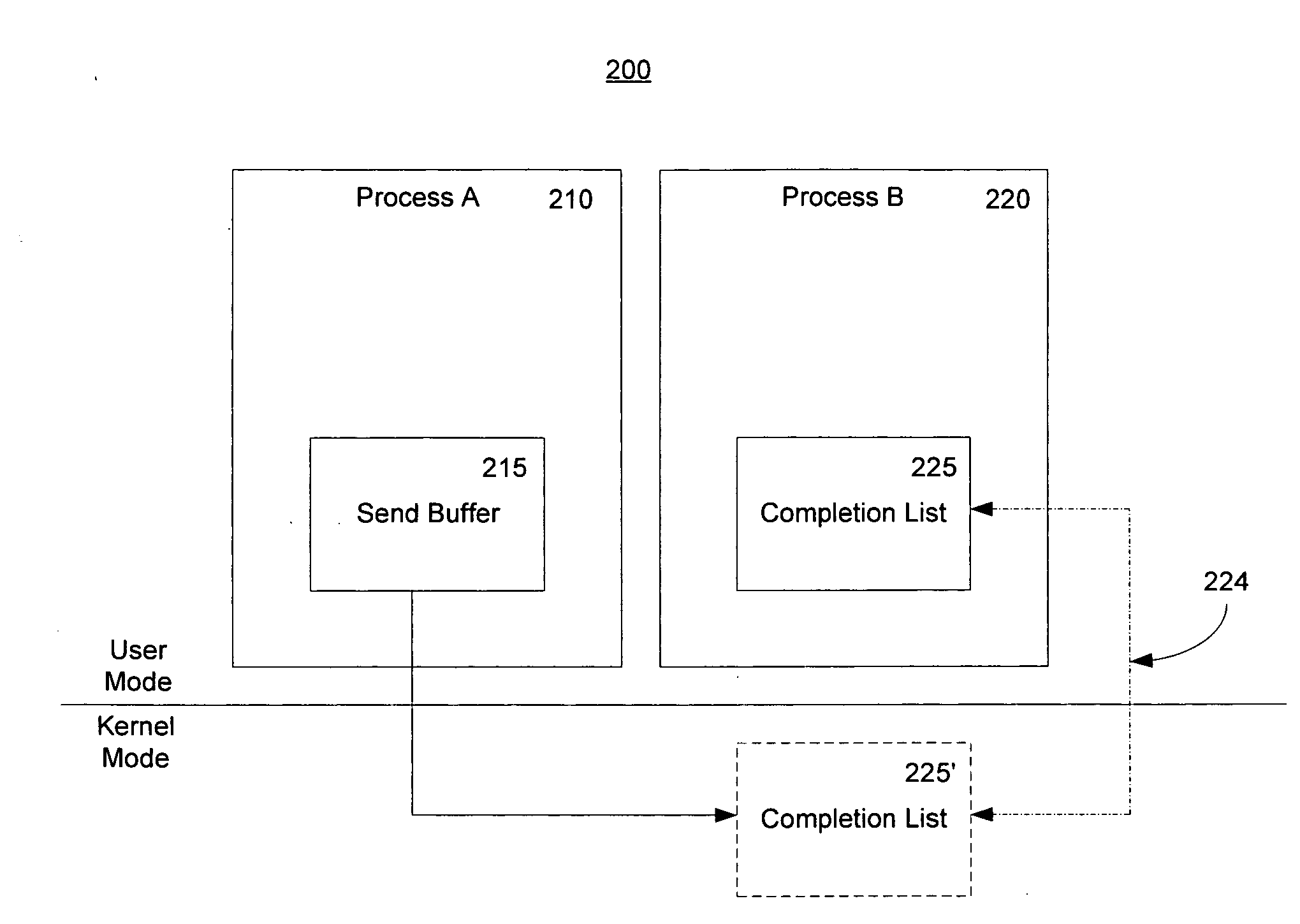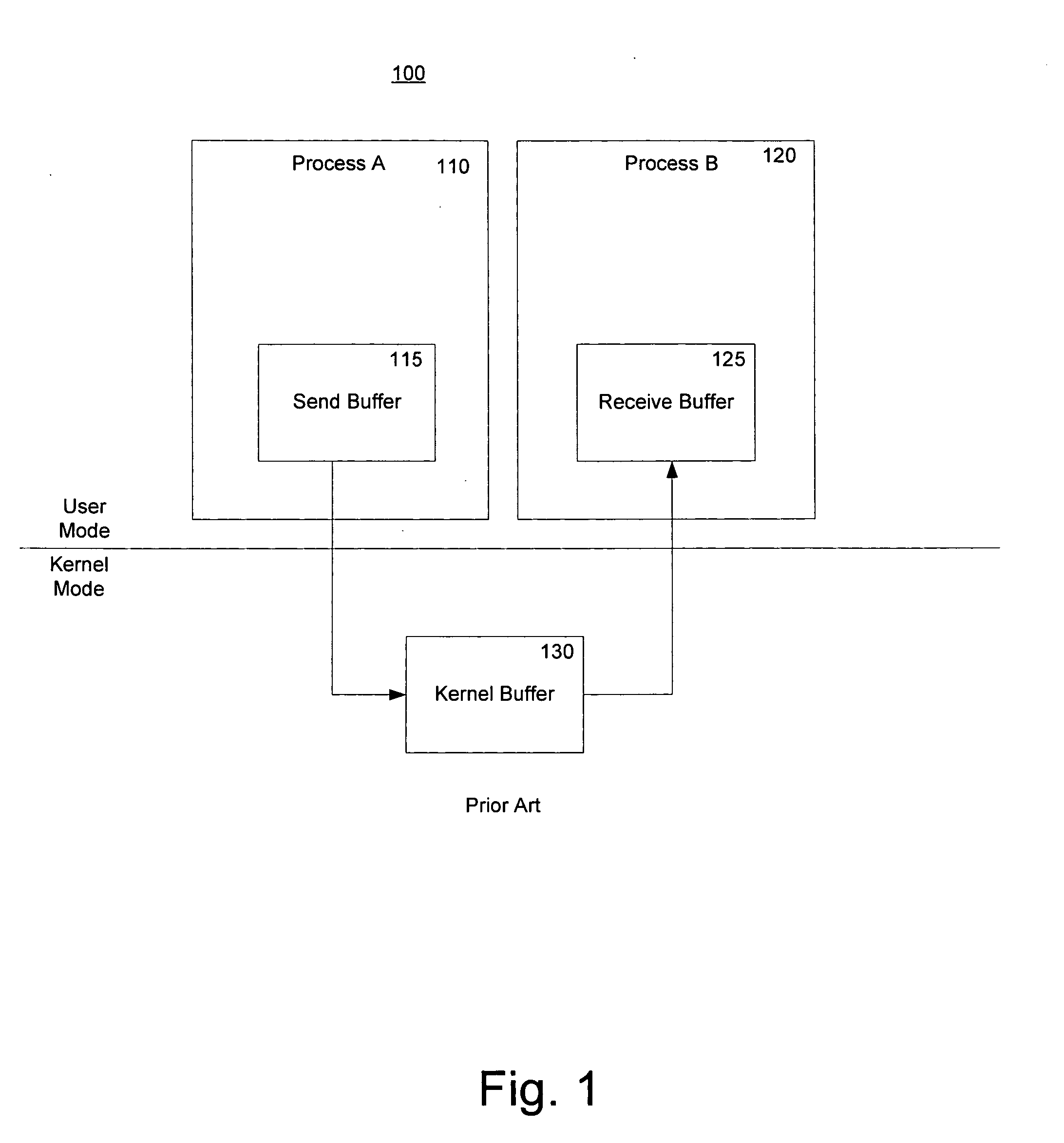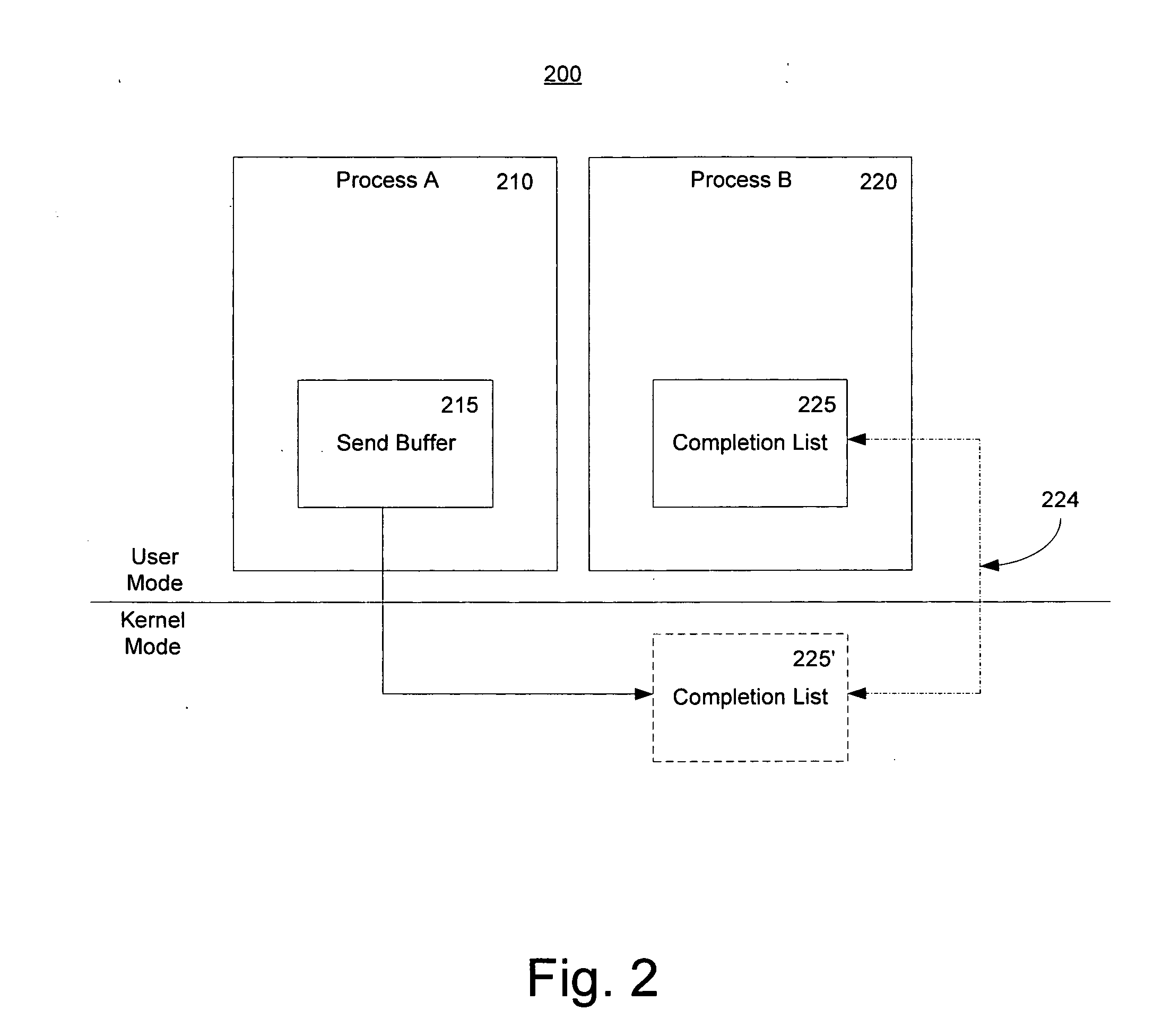Inter-process message passing
a message and inter-process technology, applied in the field of inter-process communication, can solve the problems of reducing the number of copies necessary, reducing the number of copies, and requiring a large number of copies
- Summary
- Abstract
- Description
- Claims
- Application Information
AI Technical Summary
Benefits of technology
Problems solved by technology
Method used
Image
Examples
Embodiment Construction
Exemplary Embodiments
[0015] In one embodiment of the present invention, a MS Windows® NT memory manager provides an interface for a user mode process to provide a buffer and request the kernel to probe and lock down this buffer, map them into the kernel range of the address space and associate it with the receiving endpoint of the connection. These buffers and mapping are referred to as a completion list. The present invention may use this interface to probe, lock down, and map completion lists. The double mapping of the completion lists allows direct copying of data from the sender process's send buffer into the completion list without an intermediary kernel buffer as shown in FIG. 1. The double mapping also allows the receiver process, that has registered the completion list with the kernel, to pick up messages directly without having to make a system service call. In this environment, the receiving end enables the use of the message passing data structure, i.e. completion list,...
PUM
 Login to View More
Login to View More Abstract
Description
Claims
Application Information
 Login to View More
Login to View More - R&D
- Intellectual Property
- Life Sciences
- Materials
- Tech Scout
- Unparalleled Data Quality
- Higher Quality Content
- 60% Fewer Hallucinations
Browse by: Latest US Patents, China's latest patents, Technical Efficacy Thesaurus, Application Domain, Technology Topic, Popular Technical Reports.
© 2025 PatSnap. All rights reserved.Legal|Privacy policy|Modern Slavery Act Transparency Statement|Sitemap|About US| Contact US: help@patsnap.com



